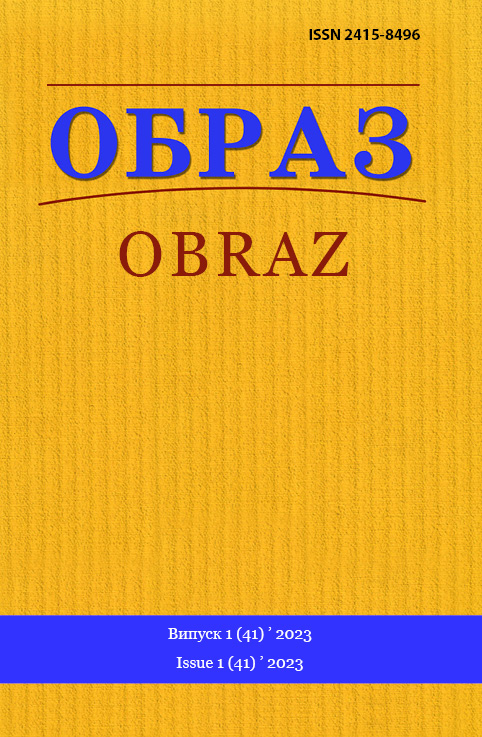Abstract
Introduction. Specific journalist criteria in selecting and filtering terrorist information, the inconsistent media coverage of terrorism in short forms, and media framing of terrorism news can shape a distorted understanding of this phenomenon on a global scale for the audience. This can lead to many negative consequences for a society, particularly the loss of its functional and organizational capabilities to resist terrorism and adequately respond to attacks due to the lack of relevant information.Relevance of the study. As terrorism has become part of Ukrainian media agenda-setting, research on this topic is highly relevant. The findings of our previous studies have demonstrated a particular concentration of media attention on terrorist attacks in the West and an ignoring of the terrorist activities in the world in general. Therefore, we tend to analyze the geographical aspect of the terrorism coverage on Ukrainian TV and its correspondence to the actual terrorist situation worldwide.
Methodology. Content analysis is the main research method. The empirical data is collected from the news programs on the five highest-rated Ukrainian TV channels («Ukraina», «ICTV», «1+1», «Inter» and «STB»). The monitoring covered 769 news programs from September 2019 to September 2020, in which 154 news stories about terrorism were found. Among the categorical units of the content analysis was the «geography» of the news story, which included the country and region identification. Having applied the comparative analysis, we could compare the obtained data with the statistics of the Global Terrorism Database, which more accurately echoed the actual terrorist situation globally.
Results. The timing of all news about terrorism in South Asia (the most active region in the context of terrorism, where more than a third of all attacks occurred) was only 0.65% of the total volume of terrorism media coverage. Sub-Saharan Africa, where every fourth terrorist attack took place, was represented by only four news reports from the Inter’s correspondent. The third region with the most terrorist activity, the Middle East and North Africa, was mainly highlighted with geopolitical context, ignoring actual terrorist incidents. Ukrainian TV focused on covering national terrorist incidents the most. However, TV channels also concentrated their media attention on the Western world (Western Europe, North America, Eastern Europe), while only 5 % of all terrorist incidents worldwide happened in these regions. Simultaneously, the geographical disparity was discovered in the representation of the world’s countries. Moreover, none of the ten deadliest terrorist attacks was covered by Ukrainian TV channels.
Conclusions. Ukrainian TV channels produce a geographical disparity in the media coverage of the terrorism topic, which not only does not correspond to the actual terrorist situation worldwide but also shapes a false image and distorted understanding of the phenomenon by a viewer. Ukrainian journalists can use the research findings to balance the geographical aspect of terrorism media coverage.
References
1. Ivanov, V. (2016), “The choice of content analysis categories and the problem of research sampling”, Naukovi zapysky Instytutu zhurnalistyky [Scientific Notes of the Institute of Journalism], vol. 3, pp. 29–33.
2. Myslovskyi, I. (2019), “Intercultural communication in the coverage of terrorism: stereotypical view of the phenomenon by Ukrainian journalists, Proceedings of the Science-in-Practice Conference “Social Communications: Fundamental Development Paradigm”, Tavrida National V.I. Vernadsky University, Kyiv, 45 October, Kyiv, pp. 83–87.
3. Myslovskyi, I. (2017), Covering of terrorism in news on Ukrainian TV channels “NewsOne” and “112 Ukraine”, master’s thesis in journalism, Institute of Journalism of Taras Shevchenko National University of Kyiv, Kyiv, 136 p.
4. Myslovskyi, I. (2021), “How TV makes hard news softer: media coverage of the conflict in DR Congo in the reportages about Ukrainian peacekeepers”, Proceedings of the III International Sciencein-Practice Conference held within the international project “Media Dialogue” “State and Quality of Conflict Research in Ukraine and the World”, Educational and Scientific Institute of Journalism, Kyiv, 27 November 2021, Kyiv, pp. 46–55, available at: http://journ.univ.kiev.ua/nauka1/wp-content/ uploads/2021/12/zbirnyk_mediadialog-1.pdf (accessed 04 January 2023).
5. Annual USAID-Internews survey “Attitudes of the population towards mass media and consumption of different types of media in 2020,” available at: https://detector.media/doc/images/ news/archive/2016/181602/2020-Media-Consumption-Survey-FULL-FIN-Ukr.pdf (accessed 28 January 2023).
6. Corbin, C. (2017), “Terrorists Are Always Muslim but Never White: At the Intersection of Critical Race”, Theory and Propaganda, available at: https://ir.lawnet.fordham.edu/flr/vol86/iss2/5 (accessed 10 January 2023).
7. Kearns, E., Betus, A. and Lemieux, A. (2018), Why Do Some Terrorist Attacks Receive More Media Attention Than Others? Justice Quarterly, 2018, available at: http://dx.doi.org/10.2139/ ssrn.2928138 (accessed 12 January 2023).
8. LaFree, G., Dugan, L., Fogg, H., and Scott, J. (2006), Building a Global Terrorism Database, United States: National Institute of Justice, pp. 77–78.
9. LaFree, G., Dugan, L. (2013), The Global Terrorism Database, 1970–2010, Handbook of Computational Approaches to Counterterrorism, pp. 3–22.
10. Myslovskyi, I. (2020), Determinants of stereotyping of the terrorism among journalists, Evropský politický a právní diskurz, Vol. 7, Iss. 2, pp. 280–291, available at: http://doi.org/10.46340/ eppd.2020.7.2.38 (accessed 06 January 2023).
11. Patrick, S. (2014), Framing Terrorism: Geography-Based Media Coverage Variations of the 2004 Commuter Train Bombings in Madrid and the 2009 Twin Suicide Car Bombings in Baghdad, Critical Studies on Terrorism, Vol. 7, pp. 379–393, available at: https://doi.org/10.1080/17539153.20 14.957009 (accessed 16 January 2023).
12. Shen, O. Charting Death: Reality vs Reported, available at: https://owenshen24.github.io/ charting-death (accessed 14 January 2023).
13. Smeltz, D., Sullivan, E. 21 Years after 9/11, Americans Are Less Concerned about Terrorism, The Chicago Council on Global Affairs, available at: https://globalaffairs.org/research/public-opinionsurvey/21-years-after-911-americans-are-less-concerned-about-terrorism (accessed 24 January 2023).
14. Terrorism, Gallup, available at: https://news.gallup.com/poll/4909/terrorism-united-states. aspx (accessed 21 January 2023).).
15. “You’re More Likely to Be Killed By Brain-Eating Parasites, Texting While Driving, Toddlers, Lightning, Falling Out of Bed”, Zero Hedge, available at: https://www.zerohedge.com/news/2014-07- 24/you’re-more-likely-be-killed-brain-eating-parasites-texting-while-driving-toddlers-l (accessed 13 January 2023).

This work is licensed under a Creative Commons Attribution 4.0 International License.

